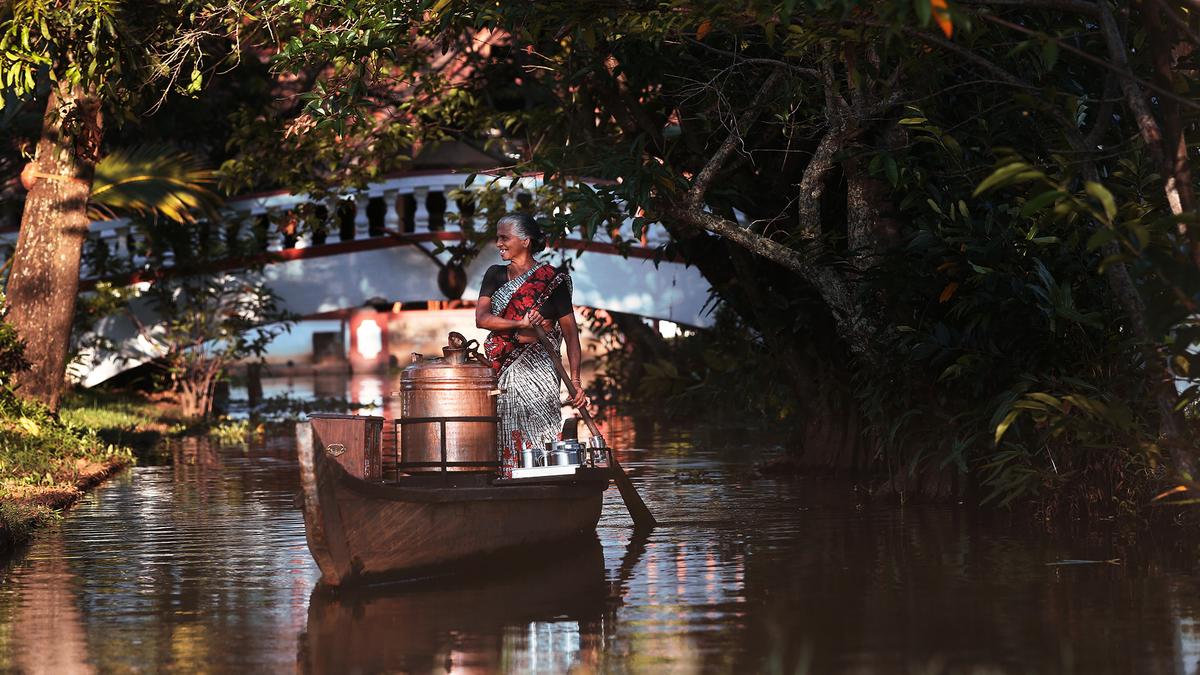As you navigate the potholed, dusty roads of the Yavatmal district in Maharashtra’s Vidarbha region, it becomes apparent that you have left behind the comfort and familiarity of an urban centre. Instead, you find yourself in the heart of rural Maharashtra, where the rhythm of life moves at its own pace. For those venturing to the Tipai Wildlife Luxuries resort in this region, it is not just a getaway — it feels like a cultural initiation.
On the way, school children in neatly pressed uniforms wave at you from outside their modest homes, their laughter cutting through the stillness of the afternoon. Men can be seen tending to their cattle in the fields, while women peek out shyly from behind the pallus of their saris, a mix of curiosity and warmth in their gaze. The scene is idyllic yet grounded, offering visitors an unvarnished glimpse into their everyday lives.
Tipeshwar is bursting with life, from lush flora to over 170 species of birds and animals — including the Bengal tiger. Little nuggets like this are sprinkled along the meandering pathways at Tipai, displayed on metal placards that guide you as you stroll between the 15 villas across the 38-acre property.
Owls can be found nestled in trees across the property
| Photo Credit:
Special arrangement
But the folks at Tipai do not believe in winging it when it comes to crafting a satisfactory guest experience. They have developed a knack for reading between the lines. “When a 25 or 32-year-old books a stay, you can often guess the kind of trip they have in mind. Is it well in advance? That suggests a planned holiday. Is it a long weekend like Deepavali or Christmas? It’s probably a festive getaway. But an odd weekday date might mean they’re celebrating something personal. These details are where we begin, enabling us to design and customise trips that truly fit the guests’ expectations,” says founder Keyur Joshi.
Beyond the morning and early evening safaris in pursuit of the elusive tiger, Tipai offers guests a deeper connection to the region through its culinary and beverage experiences. Chef Amninder Sandhu has crafted menus at Palaash and Taalabwali (featuring her signature dum biryanis and kebabs slow cooked on an open fire), presenting heartwarming interpretations of traditional Indian cuisine, all slow-cooked over an open fire.
Tipai’s Junior Naturalist Program is aimed at sparking curiosity for birds in young visitors
| Photo Credit:
Special arrangement
Complementing these dining experiences, Tipai has recently collaborated with Pune-based craft brewery Great State Aleworks to introduce Common Ground, a millet beer. The millet for this special brew is sourced from local farmers and is available exclusively to guests visiting Tipai.
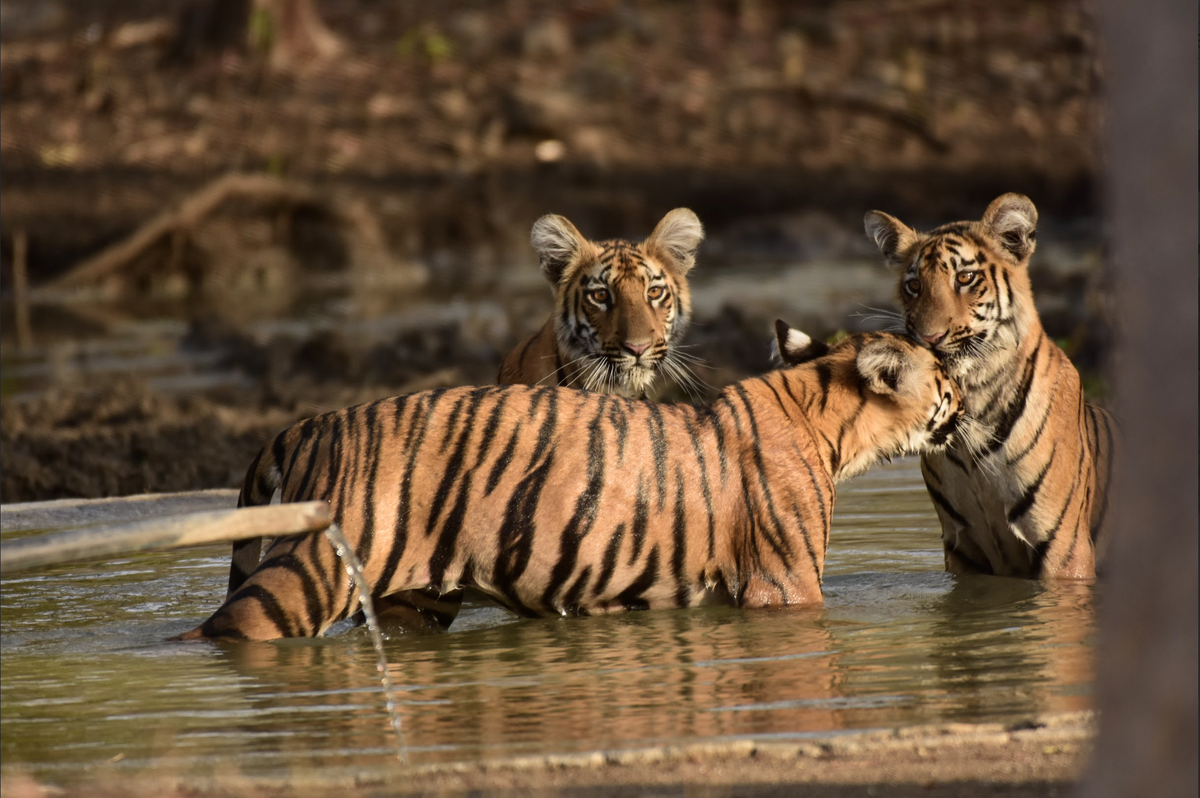
The tigers inside Tipeshwar Sanctuary
| Photo Credit:
Special arrangement
Then there is the Junior Naturalist Programme, designed to spark curiosity and nurture a love for wildlife in young visitors. “When parents are laser-focussed on spotting tigers, it’s natural for kids to follow suit. But through this program, we aim to broaden their horizons,” explains Keyur.
A tigress and her cubs inside the Tipeshwar sanctuary
| Photo Credit:
Special arrangement
“For instance, we’ll introduce them to the rare butterfly species that thrive here — some of which are actually harder to spot than a tiger,” he adds. Keyur’s ultimate goal? For guests to come for a safari but leave feeling so captivated by everything else that they might not even make it to the safari.
For the culture
Recent data from Skyscanner’s Travel Trends 2025 Report indicates a significant shift among Indian travellers toward seeking more immersive cultural experiences during their journeys. According to the report, 79% of Indian travellers plan to engage in multisensory art experiences during their holidays, highlighting a growing interest in cultural immersion.
At Amaya, a sustainable boutique resort in the Solan district Himachal Pradesh (around 55 kilometres from Chandigarh), community lies at the heart of the guest experience. The surrounding villages, bonded over generations, are home to warm and welcoming mountain folk. “A walk through nearby Darwa village, which is in the Dharampur tehsil in Solan, offers a glimpse into the simple yet rich lives of its people,” shares founder Deepak Gupta.
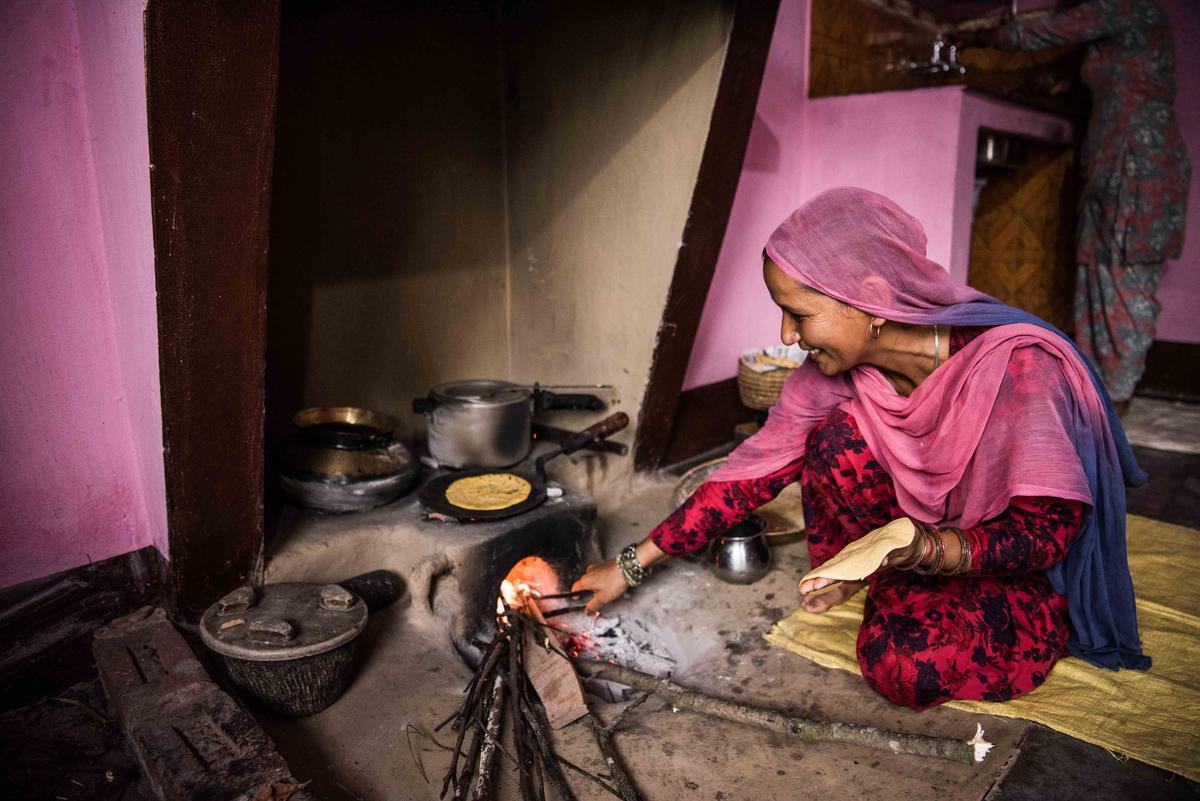
Enjoy a meal and a cup of tea at a local’s home as part of Amaya’s community initiative
| Photo Credit:
Special arrangement
When villagers in Darwa recount tales of families fleeing “wars and turmoil of the northern plains,” over tea and sometimes a meal inside their homes, they evoke centuries of upheaval. This likely refers to various periods of instability, including the repeated Muslim invasions from the 11th century onwards (for example, Mahmud Ghazni, Timur, Mughals) that caused widespread disruption and displacement. Later, the expansion of the Marathas and Sikhs, and critically, the Gurkha invasions of the early 19th century, also drove populations into the safety of the remote Himalayan valleys. These enduring narratives highlight Darwa’s historical role as a refuge, preserving a culture distinct from the rapidly changing cities below. “The culture and traditions of Darwa are a living testament to that history, untouched by the rapid changes shaping the cities around them,” says Deepak.
Luxury on wheels
Apart from the cultural immersion, Good Earth founder Anita Lal wanted guests travelling to her 10-room retreat, Sitara Himalaya near Manali, to indulge in pure luxury. That is how Sitara on the Wheel was born — a unique luxury travel experience that combines comfort with convenience.
This spacious caravan (a repurposed Volvo bus decked out in signature Good Earth finery) can accommodate up to eight people. Inside, you will find three recliner chairs, a plush sofa, and a cosy bed, making it feel like a mini home on wheels. It even features a fully equipped kitchenette, along with a private shower room and toilet.
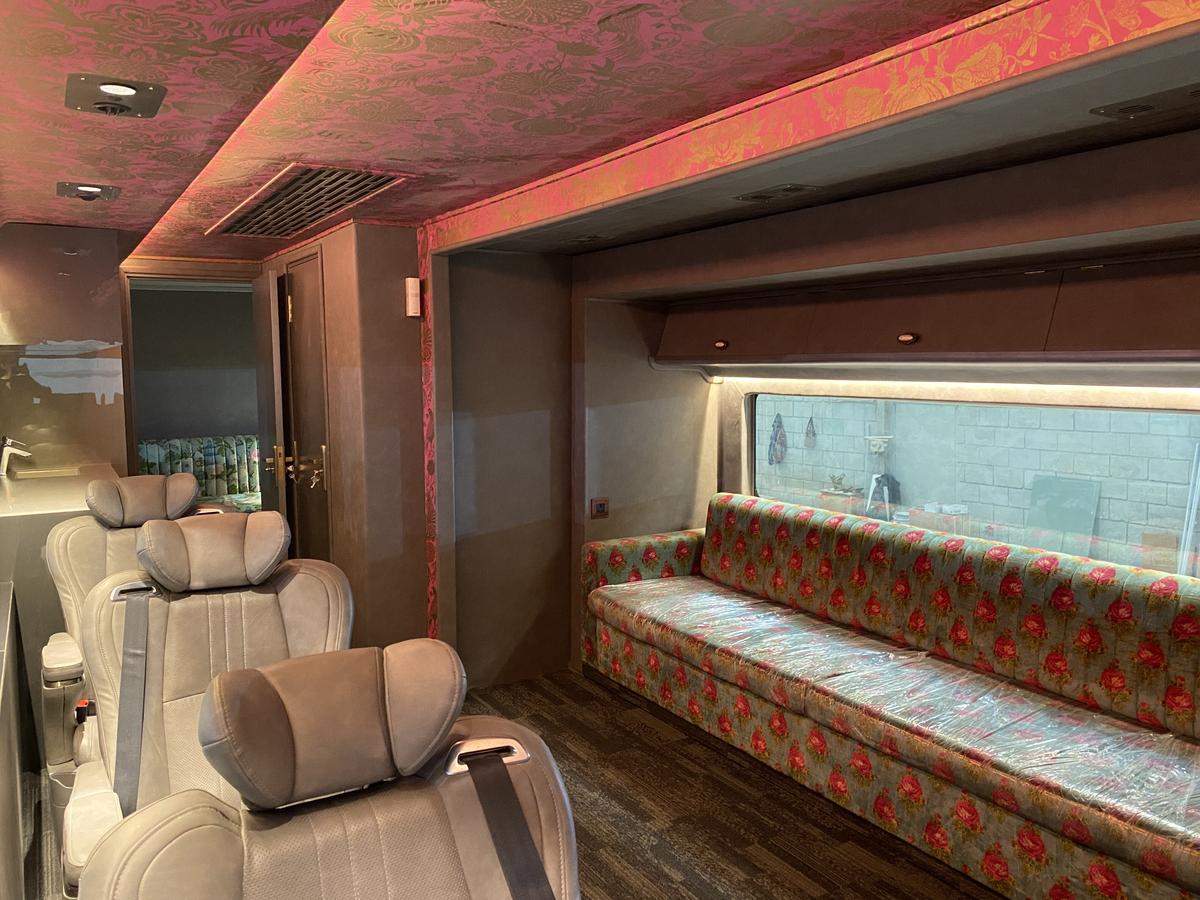
Inside Sitara on the Wheel
| Photo Credit:
Special arrangement
“She (Anita Lal) often travels to different parts of India for work, and she wanted something comfortable and luxurious for herself. When the vehicle was built and designed so beautifully, she thought, “Why not share this experience with guests at Sitara?” That’s how it became part of the guest offering — a way to provide a truly luxurious travel experience,” says Amit Singhvi, the general manager of Sitara Himalaya.
The caravan usually starts from Delhi or Chandigarh. Let us say, for example, you are starting from Chandigarh. The drive to Sitara Himalaya typically takes about six to six-and-a-half hours, but with the caravan, it stretches to around eight hours, including pit stops. “Depending on the timing, breakfast or lunch is freshly picked up from a restaurant we’ve partnered with — a chain run by a relative of Lal in Punjab and Chandigarh. If you’re up for a pit stop, we’ll pull over, and you can savour your meal outside or inside the caravan,” says Amit.
With workcations still popular now, the caravan is ideal for those who want to pause, work, or just enjoy the scenic views before heading back on the road.
More than a vacation
At CGH Earth Properties, the guest experience goes beyond luxury — it is about authentic cultural immersion deeply rooted in the local communities and their traditions. Take Coconut Lagoon in Kumarakom, Kerala, for example, where guests are treated to a unique experience that blends local culture with hospitality.
Each evening, at around 4.30 pm, a woman from the nearby village, affectionately known as ‘Chaya Chechi,’ navigates her small canoe through the backwaters to serve traditional tea and snacks to guests at the property. This practice harks back to the conventional ‘chaya vallam’ (floating tea shop) that once served workers in the paddy fields of Kuttanad, delivering hot tea and snacks via the waterways.
Chaya Chechi also shares stories from her village, fostering genuine interactions rather than staged performances. This setting provides an opportunity to enjoy local snacks and tea, mirroring the traditional Malayali work break and enriching the cultural immersion for visitors.
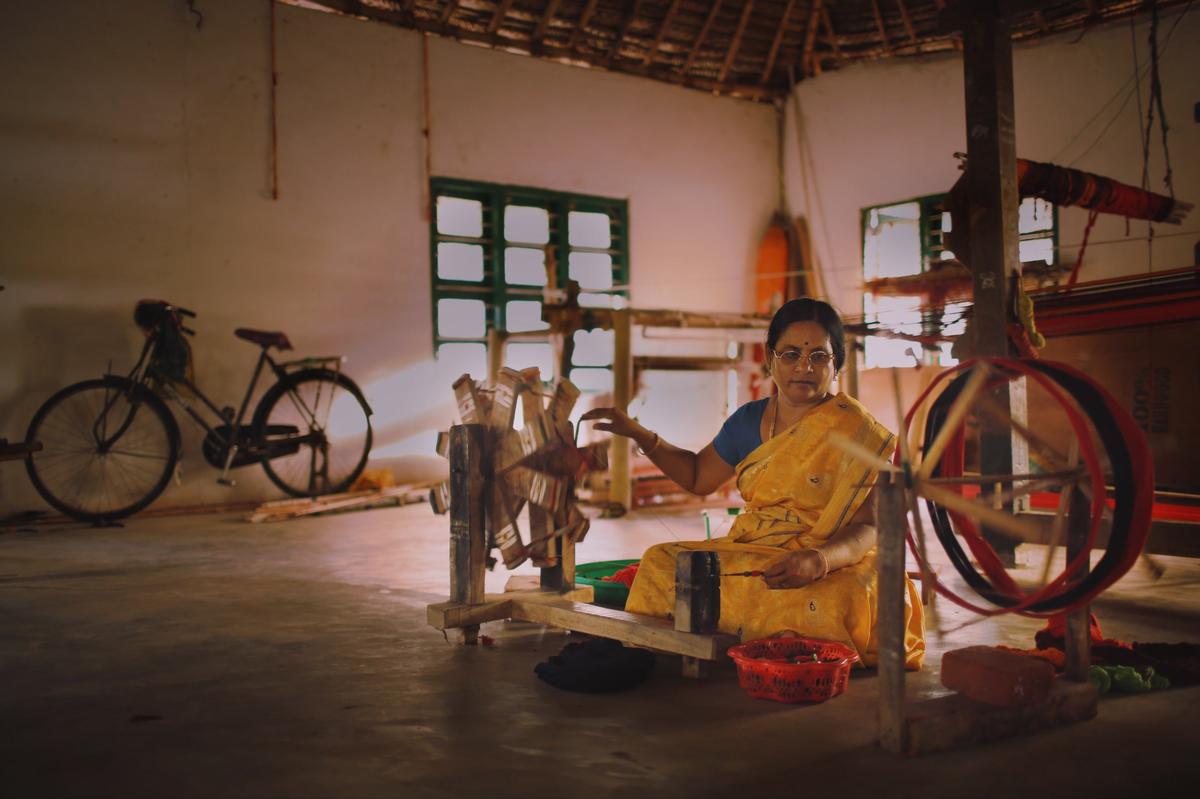
Explore Chettinad cotton textiles at Visalam
| Photo Credit:
Special arrangement
Similarly, at Mantra Koodam in Kumbakonam, Tamil Nadu, the resort extends the essence of the town’s Vedic heritage and UNESCO-listed temples. Known historically as a hub for learning, Kumbakonam’s cultural legacy is reflected in the resort. “We have integrated local traditions into our culinary offerings by researching Chola-era cuisine and dishes mentioned in Sangam literature. The food is a deep dive into the region’s history,” says Mridula Jose, vice president of product development and marketing at CGH Earth.
Mantra Koodam also connects guests to the local economy. Kumbakonam, like Kanchipuram, is renowned for its handwoven silk sarees. Guests are taken to see the cooperative of artisans weaving these saris in their homes, allowing them to witness the process firsthand. “This initiative not only gives guests an enriching cultural experience but also supports the local community, creating a symbiotic relationship where tourism directly benefits artisans and their families,” says Mridula.
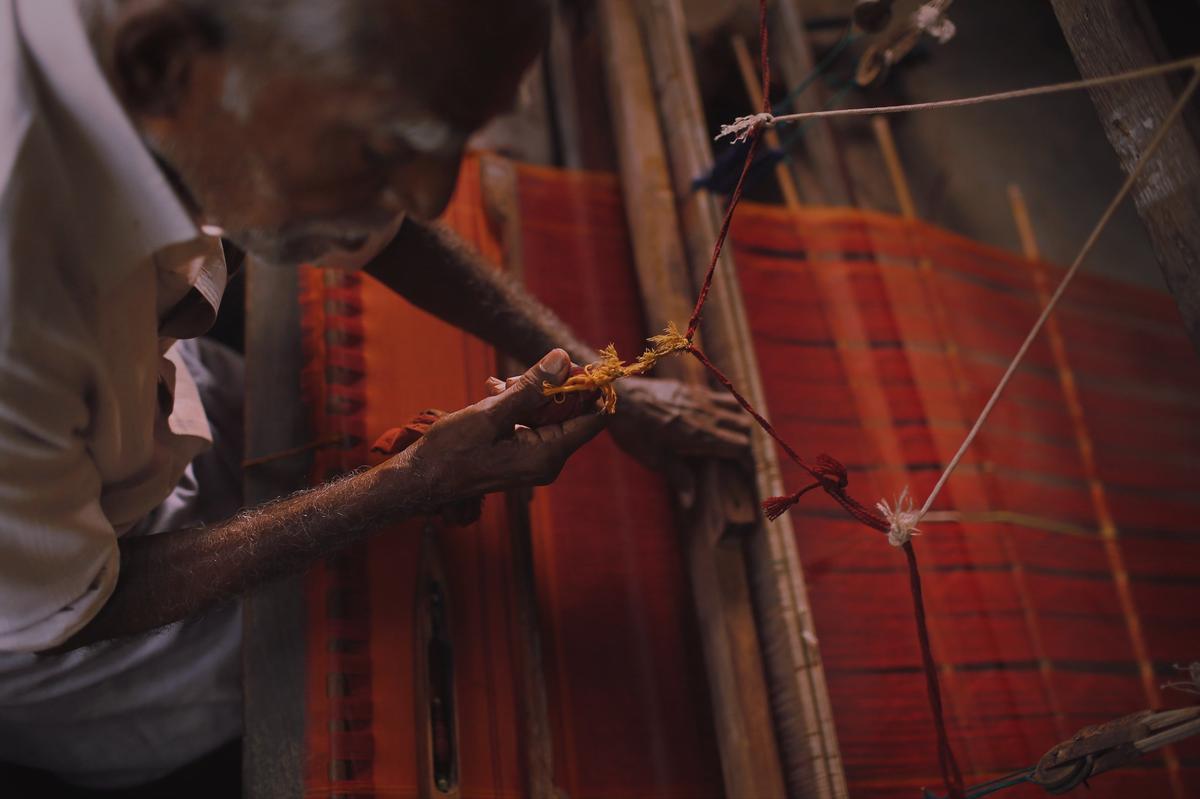
Artisans weaving these saris in their homes
| Photo Credit:
Special arrangement
Further south in Chettinad, Visalam, a heritage property, takes this ethos a step further. Located about two-and-a-half-hours from Kumbakonam, Visalam is a restored Chettiar mansion, originally built as a wedding gift for a Chettiar’s daughter. The mansion’s history is woven into the guest experience, from the rooms that once housed dowries to the architecture that reflects the grandeur of Chettiar craftsmanship.
Visalam’s guest experiences are deeply tied to the Chettinad community. “Here, one can explore Chettinad cotton textiles, handmade Athangudi tiles, and the region’s famed cuisine. They can visit weavers, interact with craftsmen, or cycle through the heritage town with an interpreter who brings the area’s rich history to life,” says Mridula.
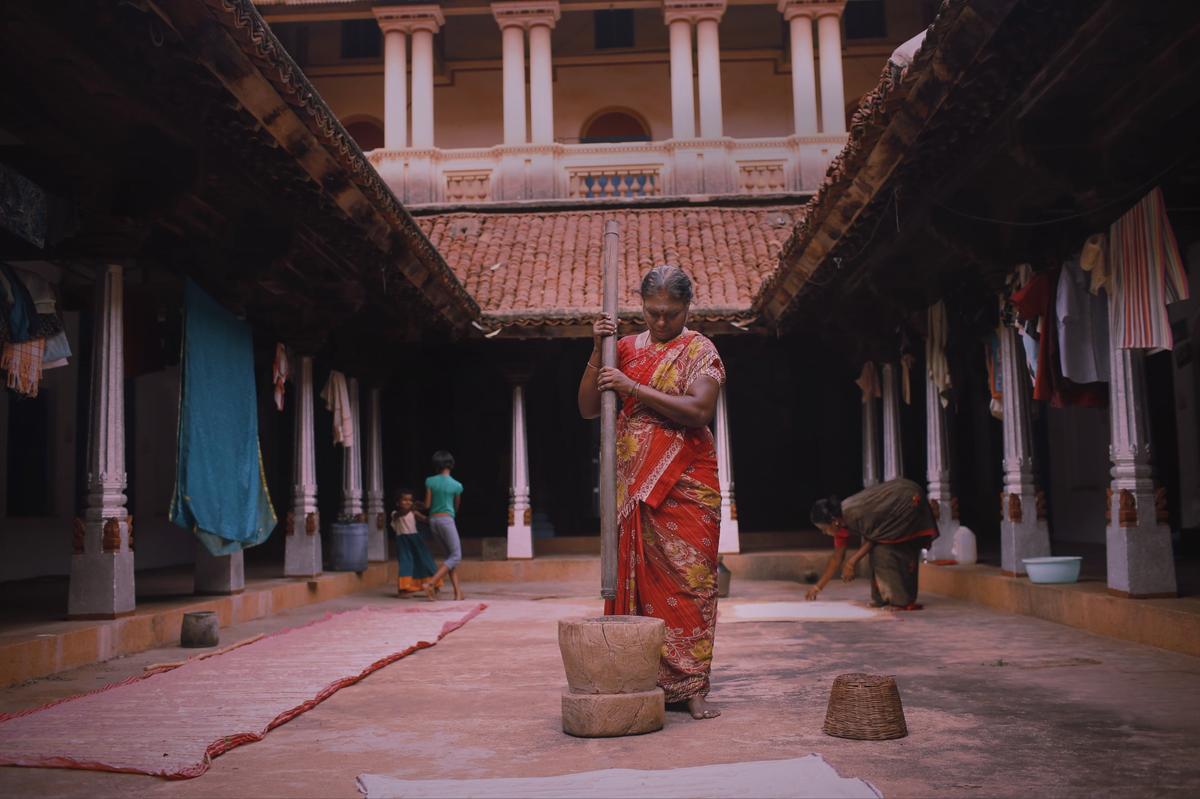
Visalam is a restored Chettiar mansion
| Photo Credit:
Special arrangement
It is safe to say that more and more hospitality brands are focussed on creating a holiday that is enriching, immersive, and meaningful — not just for the guests but also for the local communities that make it all possible.

